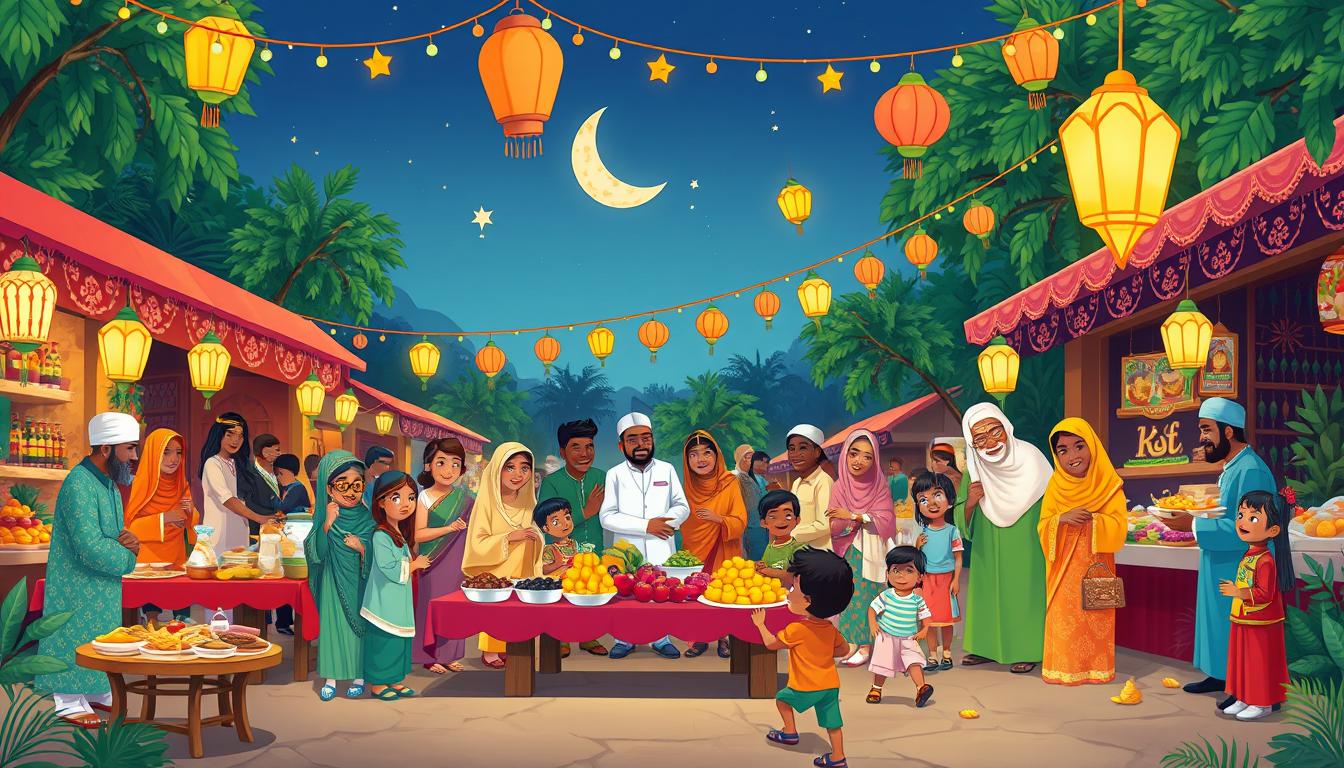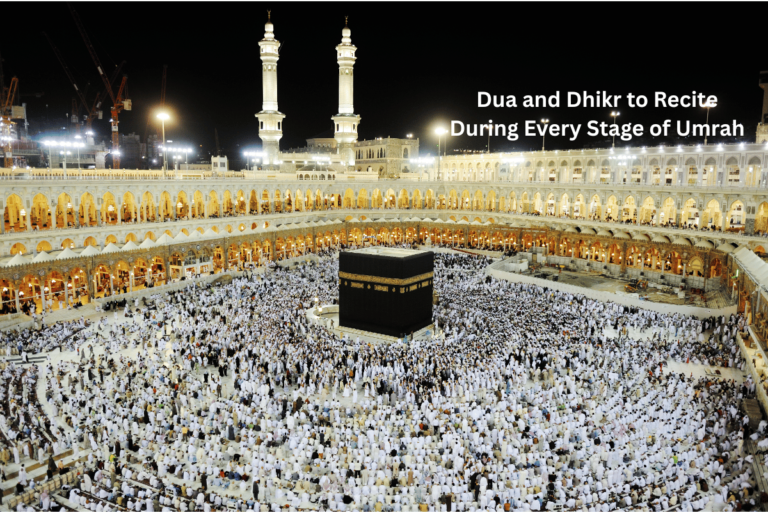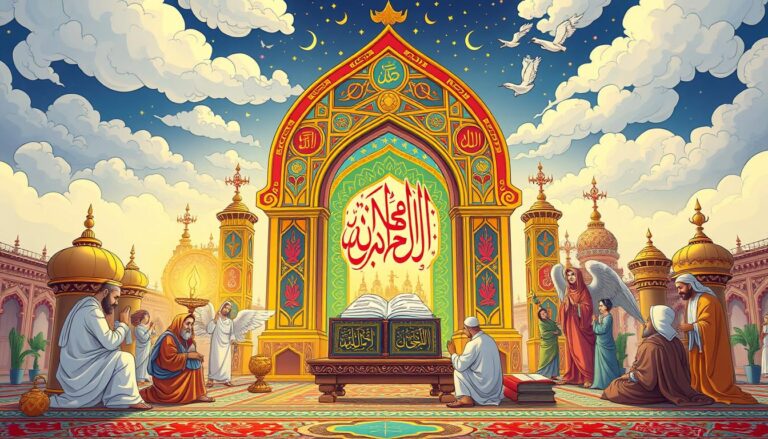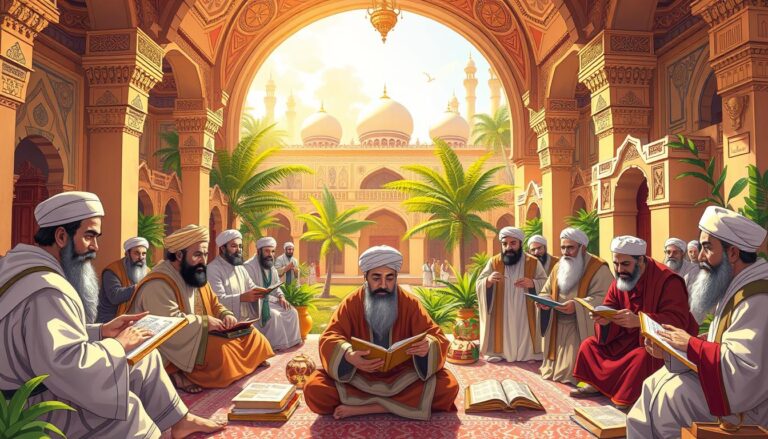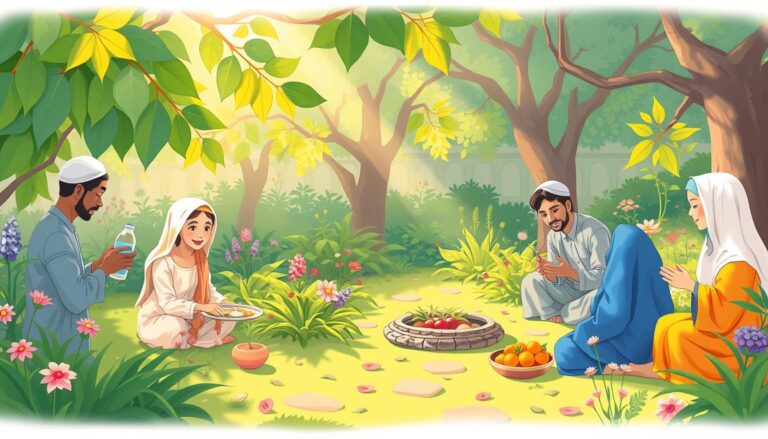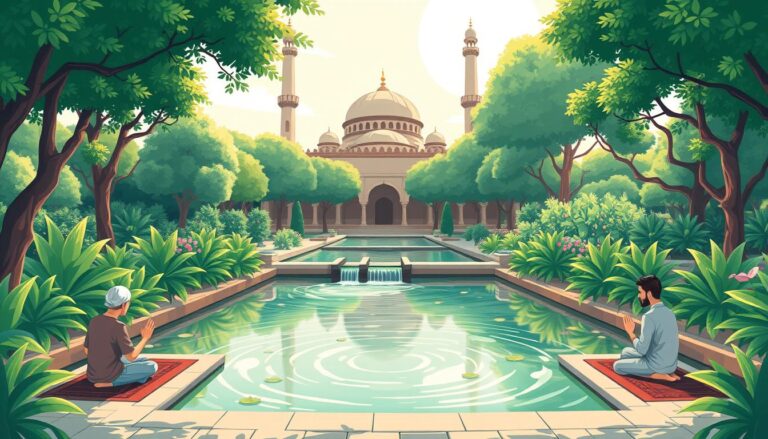10 Unique Eid Traditions from Around the World
Have you ever wondered how Muslims celebrate Eid al-Fitr globally? This festival marks Ramadan’s end and shows off cultural diversity. In South Africa, people watch for the moon, while in Turkey, they enjoy sweet feasts. Each region has its own special way of celebrating Eid.
Eid al-Fitr is more than a religious event; it’s a time for family and community. In Pakistan, women wear intricate mehndi designs. In Somalia, families share Cambaabur, a special dessert. These customs show the rich tapestry of Eid celebrations across the globe.
As we explore Eid traditions, we’ll see the world from Istanbul to Bosnia. We’ll learn how people come together to celebrate. Each tradition reveals the heart of Muslim communities, showing diversity and unity in Eid al-Fitr.
Key Takeaways
- Eid al-Fitr is celebrated by over two billion Muslims worldwide
- Traditions vary greatly, reflecting local cultures and customs
- Food plays a central role in many Eid celebrations
- Gift-giving, especially to children, is a common practice
- Some countries have unique customs, like egg fights in Afghanistan
- Eid often involves community gatherings and acts of charity
- Traditional clothing and decorations are important aspects of the festival
The Significance of Eid al-Fitr in Islamic Culture
Eid al-Fitr celebrates the end of Ramadan, a month of fasting and reflection. It’s a time of joy, bringing together millions to celebrate faith, unity, and cultural diversity.
Understanding the End of Ramadan
Eid al-Fitr is on the first day of Shawwal in the Islamic calendar. It’s a three-day festival, known as the “Lesser Eid.” In many countries, it’s a national holiday, allowing families to come together and celebrate.
Global Unity in Celebration
Muslims worldwide come together for Eid al-Fitr. The day begins with special prayers in large groups. Families greet each other with “Eid Mubarak” and share meals.
An important part is Zakat al-Fitr, a charitable act to help those in need.
The Importance of Cultural Diversity in Eid Traditions
Eid al-Fitr shows the rich diversity of Islamic cultures. In Turkey, it’s called “Lesser Bayram.” In Singapore, the Geylang Serai Ramadan Bazaar offers a feast for the senses.
In Egypt, elders give money to younger family members. New Zealand’s Auckland hosts carnival-style celebrations at Eden Park.
“Eid al-Fitr is a time when Muslims worldwide come together, transcending borders and cultures, to celebrate the end of Ramadan with joy and gratitude.”
This global celebration highlights the beauty of cross-cultural exploration within the Islamic faith. From traditional foods to unique local customs, Eid al-Fitr truly embodies the spirit of unity in diversity.
South Africa’s Moon Watchers: A Unique Eid Tradition
South Africa has a special tradition for Eid al-Fitr. They call it “moon watching” or “maan kykers” in Afrikaans. These people look for the first crescent moon with their eyes.
The Muslim Judicial Council picks these moon watchers. They stand on places like Signal Hill and Sea Point Promenade. Their job is to say when Ramadan ends and Eid al-Fitr starts.
This tradition is very important in Islamic celebrations. It makes everyone excited for Eid. It shows how lunar observation is key in Islamic celebrations.
Many South African Muslims look forward to hearing from the moon watchers. This tradition is so popular that it draws both Muslims and non-Muslims. It brings people together and helps them understand each other’s cultures.
“The moon watchers’ role is not just about spotting the crescent; it’s about connecting our community to ancient traditions and bringing us together in celebration.”
As Eid al-Fitr gets closer, families and friends wait for the moon watchers’ news. This wait creates a feeling of togetherness. It makes Eid celebrations in South Africa unforgettable.
Turkey’s Sweet Celebration: Şeker Bayramı
In Turkey, Eid al-Fitr is celebrated with a sweet twist called Şeker Bayramı. This three-day festival marks Ramadan’s end with lots of traditional fun and tasty treats.
The Festival of Sweets Explained
Şeker Bayramı is all about sweets. People say “Bayramınız Mübarek Olsun,” wishing each other blessed feasts. Families come together, traveling far to be with loved ones.
Traditional Turkish Desserts for Eid
During Şeker Bayramı, Turkish pastry shops are filled with activity. Favorites include baklava, şekerpare, and lokum (Turkish delight). Other treats like semolina halva, revani, kadayıf, and tulumba are also enjoyed.
These sweets are shared with guests and given as gifts. They show the holiday’s spirit of giving.
Gift-Giving Customs in Turkey
Gift-giving is key in Şeker Bayramı. Kids bow to elders for blessings and coins, a tradition called temenna. Neighbors exchange sweets and small gifts.
Visiting relatives in order of age and importance is a long-standing custom. It strengthens family ties and shows respect for elders.
Şeker Bayramı mixes religious observance with fun traditions. It’s a time for unity, thanks, and celebration for Turkish Muslims.
Afghanistan’s Playful Eid Tradition: Tokhm-Jangi
Eid al-Fitr in Afghanistan is a mix of cultural diversity and fun traditions. Tokhm-Jangi is a highlight, where people have a colorful egg fight. It shows the fun side of Eid in the country.
In Tokhm-Jangi, people decorate hard-boiled eggs in bright colors. They try to crack each other’s eggs by gently bumping them. This game makes Eid celebrations more exciting and brings everyone together.
But Tokhm-Jangi is not the only game enjoyed in Afghanistan. Others include:
- Buzkashi: The national sport involving horse-mounted players
- Kite fighting: A century-old tradition known as Gudiparan bazi
- Sangi rag: A stone-throwing game where teams compete for points
Afghans also have other important Eid customs. They give to charity, share meals with neighbors, and pray together. These actions strengthen community ties and show the importance of generosity during Eid al-Fitr.
“Eid traditions like Tokhm-Jangi remind us to find joy in simple pleasures and celebrate our shared humanity.”
As Afghanistan celebrates its rich culture, Tokhm-Jangi is a symbol of hope and unity. This fun tradition shows that Eid can bring light and laughter, even in tough times.
Somali Eid Delights: Cambaabur and Halvo
Eid al-Fitr in Somalia brings unique flavors to traditional celebrations. The festive rituals center around two special dishes: cambaabur and halvo. These treats embody the spirit of Eid, blending taste with tradition.
The Significance of Wheat and Millet in Eid Cuisine
Cambaabur, a staple of Somali Eid breakfast, combines wheat and millet. This hearty bread, sweetened with sugar and topped with yogurt, represents the bounty of the harvest. The use of these grains in festive meals highlights their importance in Somali culture.
Sharing Food as a Symbol of Community
Halvo, a sticky dessert made from cornstarch, sugar, and oil, is another Eid favorite. Families prepare large batches to share with neighbors and friends. This act of sharing sweets strengthens community bonds and embodies the generous spirit of Eid al-Fitr.
Traditional Somali Eid Breakfast Customs
Eid morning in Somalia starts with a special breakfast. Families gather to enjoy cambaabur, often accompanied by sweet tea. This meal marks the end of Ramadan fasting and the beginning of joyous festivities. The tradition of breaking bread together reinforces family ties and cultural identity.
“Eid is a time when our kitchens buzz with activity. The aroma of cambaabur and halvo fills the air, reminding us of our shared heritage and the joy of coming together,” says a local Somali chef.
These Somali Eid delights showcase the rich culinary traditions that form an integral part of festive rituals. They serve as a delicious reminder of the cultural significance of food in celebrations across the Muslim world.
Pakistani Mehndi Traditions During Eid al-Fitr
Eid al-Fitr in Pakistan is a time of joy and celebration. It’s filled with cultural diversity and traditional customs. One of these traditions is the use of mehndi, or henna, on women’s hands.
Before Eid, streets buzz with mehndi artists. Women gather at these stalls, especially on Chand Raat, the night before Eid. The designs they get are full of joy and blessings.
Mehndi is also a big part of Pakistani weddings. The Mehndi Ceremony, a pre-wedding event, features brides with beautiful henna designs. This shows the rich culture of Pakistan.
- Mehndi stalls pop up in markets during Ramadan’s last 10 days
- Women often apply mehndi on Chand Raat (Night of the Moon)
- Intricate designs symbolize joy and blessings
Eid al-Fitr in Pakistan is more than just mehndi. It’s a time for new clothes, tasty food, and family. Children get Eidi, money from elders. The smell of perfume and the sound of cannons fill the air.
“Eid Mubarak” echoes through streets as people embrace, sharing in the joy of this special day.
These traditions highlight the beauty of cultural diversity in Eid celebrations. From mehndi to family feasts, each custom adds a special touch to this festival.
10 Unique Eid Traditions from Around the World
Eid al-Fitr is a time of joy for Muslim communities worldwide. It brings people together with special customs. These customs show the diversity and unity of global traditions.
Indonesia’s Lapis Legit: The Thousand-Layer Cake
In Indonesia, Eid is celebrated with a special dessert, Lapis Legit. This cake has a thousand layers, showing the holiday’s sweetness. Families work hard to make it, symbolizing community bonds during Eid al-Fitr.
Saudi Arabia’s Anonymous Charity Tradition
In Saudi Arabia, Eid brings a touching tradition. Families secretly leave food for those in need. This act of kindness shows the holiday’s spirit of giving.
Bosnia’s Graveside Visits on Eid
Bosnian Muslims visit graves of loved ones during Eid. They pray and remember those who have passed. This tradition mixes joy with reverence, showing the depth of Eid customs.
These traditions highlight Eid al-Fitr’s global customs. From Indonesia’s sweet treats to Saudi Arabia’s secret gifts and Bosnia’s graveside visits, each culture adds its own flavor. Together, they make Eid a universal celebration.
Malaysia’s Open House Tradition: Hari Raya Hospitality
In Malaysia, Eid al-Fitr is celebrated with a unique tradition called Hari Raya Puasa. This marks the end of Ramadan and shows off the country’s rich culture. A key part of these celebrations is the ‘open house’ custom, where people welcome guests into their homes.
During Hari Raya, families prepare lavish buffets with local foods like sate, nasi goreng, and nasi lemak. They invite not just family and friends, but also neighbors and strangers. This shows Malaysia’s spirit of community and diversity during the festive season.
The open house tradition brings people together, beyond religious differences. You’ll see Malays, Chinese, Indians, and indigenous groups celebrating together. This highlights Malaysia’s unity in diversity, making Eid al-Fitr a special time for everyone.
Source Links
- Eid traditions From Around The World | Citizen Femme
- 10 Beautiful Eid Al-Fitr Celebrations From Around the World
- Eid Around the World: Unique Traditions from 5 Countries
- What is Eid al-Fitr and how do Muslims celebrate it? 6 questions answered
- Eid al-Fitr
- Eid al-Fitr around the world: How it’s celebrated in different places
- Ramadan Around the World – Jackson County Library District
- Exploring Ramazan traditions across the world
- WorldRemit teams up with Muslim artist to showcase Ramadan traditions from around the world – British Muslim Magazine
- Seker Bayramı – Turkey’s three day sweet feast
- Ramadan Bayram: An Eid of traditions, festivities, sweets in Türkiye
- Traditional games of Afghanistan
- KURDISH NATIONALISM AND ISLAM: AN ETHNOGRAPHY OF MODERN IRAQI AND TURKISH KURDISTAN
- 10 Countries That Have Homecoming Traditions Eid celebration
- How Eid is Celebrated in Different Countries | Darcey Flowers
- 10 Eid Al Fitr Traditions We’re Looking Forward To In The UAE
- The Magic of Eid ul Fitr
- Eid al-Fitr: What Is It and When Is It Celebrated? – Playaling
- The history of the mehndi ceremony?
- 25 of the Most Delicious Eid al-Fitr Foods from Around the World
- Eid Mubarak! Traditions & Celebrations Around The World – Going Places by Malaysia Airlines
- Malaysia – Culture, Cuisine, Traditions | Britannica
- Malaysian Cultural Festivals & Traditions – The University of Nottingham

